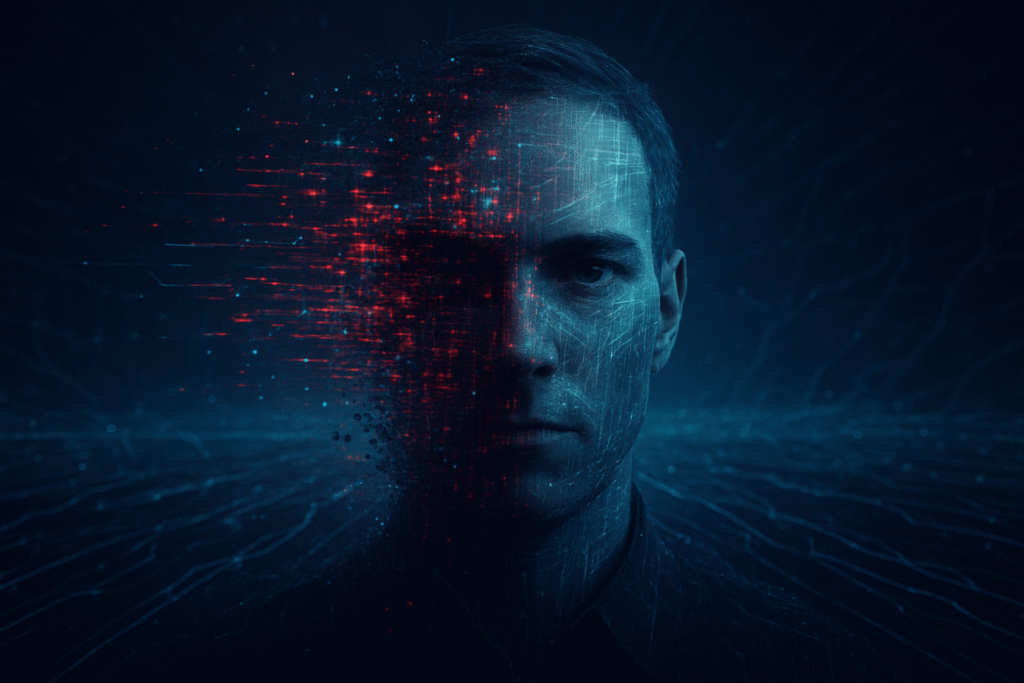
The digital landscape is increasingly fraught with the peril of AI-generated fake videos, a phenomenon that poses an existential threat to media integrity and public trust. These hyper-realistic manipulations, often indistinguishable from genuine content, are rapidly becoming a formidable tool for misinformation. A recent incident involving Fox News publishing AI-generated racist content serves as a stark and troubling case study, highlighting the immediate and profound challenges facing news organizations and the public in an era where "seeing is believing" is no longer a reliable axiom.
This incident, which unfolded around November 2025, underscores the escalating sophistication and accessibility of deepfake technology. It exposed critical vulnerabilities in journalistic vetting processes and ignited widespread concern over the ease with which fabricated narratives can infiltrate mainstream media, ultimately eroding the foundational trust between news outlets and their audiences. The event is a crucial alarm bell, signaling an urgent need for enhanced vigilance, robust detection mechanisms, and a renewed commitment to critical evaluation of all digital content.
The Algorithmic Illusion: Unpacking the Technology Behind Deepfakes
The creation of AI-generated fake videos, or deepfakes, is a testament to the remarkable, yet often unsettling, advancements in artificial intelligence, primarily driven by deep learning. These sophisticated manipulations involve intricate processes of data collection, preprocessing, model training, and content generation, culminating in synthetic media that can convincingly mimic reality. At the heart of most deepfake creation lie two powerful neural network architectures: Generative Adversarial Networks (GANs) and, more recently, diffusion models.
Generative Adversarial Networks (GANs) operate on a principle of adversarial competition. A 'generator' network creates synthetic content, such as images or video frames, while a 'discriminator' network simultaneously evaluates whether this content is real or fake. This iterative game pushes the generator to produce increasingly realistic fakes, and the discriminator to become more adept at identifying them, until the synthetic output is virtually indistinguishable from genuine media. Examples like StyleGAN have demonstrated the ability to generate highly realistic human faces. Diffusion models, a newer and increasingly prevalent technique, work by progressively adding noise to an image and then learning to reverse this process, generating new, high-quality images from pure noise. These models, exemplified by tools like Stable Diffusion, can be used for sophisticated face swaps or to create entirely new visual content based on text prompts, often leveraging techniques like Low-Rank Adaptation (LoRAs).
Deepfakes represent a paradigm shift from traditional video manipulation techniques. Historically, altering videos involved laborious manual editing with software like Adobe Premiere or Final Cut Pro, requiring frame-by-frame adjustments. This process was labor-intensive, costly, and often left discernible artifacts. Deepfakes, in contrast, automate the process through AI, synthesizing or manipulating content autonomously with minimal human intervention. Their ability to learn from vast datasets enables the production of hyper-realistic results that far surpass the quality and seamlessness of older methods. Furthermore, the accessibility of AI tools, from open-source platforms to mobile apps, has democratized content manipulation, allowing individuals with limited technical expertise to create sophisticated deepfakes, a capability once reserved for highly skilled professionals.
The AI research community and industry experts reacted to the emergence of deepfakes with a mixture of awe and profound concern. While recognizing the technological prowess, there was immediate alarm over the potential for malicious use, particularly for non-consensual pornographic videos, misinformation, fraud, and political propaganda. Experts quickly identified the threat to public trust and the potential for a "liar's dividend," where genuine content could be dismissed as fake. This led to calls for an "arms race" in deepfake detection, with initiatives like the Deepfake Detection Challenge aiming to spur research. Despite early predictions of a "misinformation apocalypse" in elections, a 2024 report from Meta (NASDAQ: META) indicated that AI content constituted a smaller percentage of fact-checked misinformation during election cycles. However, the risks of individual harassment, non-consensual content, and social engineering attacks using voice cloning remain significant.
The Deepfake Double-Edged Sword: Impact on the AI Industry
The proliferation of AI-generated fake videos presents a complex and evolving landscape for AI companies, tech giants, and startups, acting as both a catalyst for innovation and a significant liability. Companies involved in the development of generative AI find themselves at the forefront, grappling with the dual challenge of advancing capabilities while simultaneously mitigating potential misuse.
On one side, a nascent industry is emerging around the legitimate applications of synthetic media. Companies like Synthesia, which enables businesses to create professional AI-generated videos without actors, and D-ID, specializing in animating still photos into lifelike video, are carving out new market niches in automated content creation, personalized marketing, and corporate training. Their market positioning hinges on the efficiency, scalability, and quality of their synthetic media outputs, offering cost-effective and innovative solutions for content production. Similarly, companies like Respeecher and Modulate.ai are advancing voice synthesis technology for applications in gaming and audiobooks.
However, the more pervasive impact is the immense pressure deepfakes exert on major tech companies and social media platforms. Companies such as OpenAI, Google (Alphabet, NASDAQ: GOOGL), and Meta (NASDAQ: META) are in a critical "arms race" to develop sophisticated deepfake detection and mitigation strategies. OpenAI's advanced generative models like Sora, while showcasing impressive video generation capabilities, also heighten concerns about deepfake proliferation. In response, OpenAI is actively developing deepfake detectors, implementing content credentials (e.g., C2PA standard), and watermarks for AI-generated content to ensure provenance. Google, a significant player in deepfake detection, released the DeepFake Detection Dataset and developed SynthID for watermarking and detecting AI-generated content across its tools. Meta is similarly investing heavily, labeling AI-generated images on its platforms and developing invisible watermarking technology like Stable Signature, as well as AudioSeal for audio deepfakes.
This dynamic creates significant competitive implications. For major AI labs and tech companies, leadership in generative AI now comes with the imperative of demonstrating responsible AI development. Their ability to deploy effective safeguards against deepfake misuse is crucial for maintaining public trust, avoiding regulatory scrutiny, and protecting their brand reputation. Failure to adequately address this threat could jeopardize their market leadership and user base. The market for deepfake detection is projected to grow substantially, from US$5.5 billion in 2023 to US$15.7 billion in 2026, creating a booming sector for cybersecurity firms and startups like Sensity, Truepic, and Reality Defender, which specialize in authentication and verification solutions. These companies are becoming indispensable for businesses and platforms seeking to protect against fraud, misinformation, and brand damage.
Eroding Reality: Deepfakes' Broader Impact on Society, Politics, and Trust
AI-generated fake videos are not merely a technical novelty; they represent a fundamental challenge to the very fabric of information, trust, and democratic processes, fitting squarely into the broader landscape of rapidly advancing generative AI. Their increasing realism and accessibility are accelerating a concerning trend towards a "post-truth" environment, where objective facts become negotiable and the line between reality and fabrication blurs.
The societal impacts are profound. Deepfakes threaten to further erode public trust in media and information sources, making it increasingly difficult for individuals to discern truth from falsehood. This erosion can damage individual reputations, particularly through non-consensual explicit content, and foster a general atmosphere of skepticism towards all digital content. The ease with which deepfakes can spread misinformation on social media exacerbates existing societal divisions and makes informed decision-making more challenging for the average citizen.
In the political arena, deepfakes have already emerged as a potent weapon in information warfare. They can be deployed to influence elections by fabricating misleading statements from candidates, creating fake endorsements, or manufacturing incriminating content. Incidents like deepfake videos of Ukrainian President Volodymyr Zelenskiy asking his army to cease fighting, or AI-generated audio influencing elections in Slovakia, demonstrate their capacity to sow confusion, manipulate public opinion, and destabilize political discourse. Hostile state actors can leverage deepfakes for psychological operations, spreading false narratives about military actions or intentions, thereby posing a significant threat to national security and international relations. The Israel-Hamas conflict has also witnessed the use of strikingly lifelike, AI-manipulated images to fuel misinformation, underscoring the global reach of this threat.
These concerns are amplified by comparisons to previous AI milestones. While breakthroughs like AlphaGo's mastery of Go or the advanced language capabilities of GPT-3 showcased AI's intellectual prowess, deepfakes highlight AI's capacity for highly persuasive, realistic, and potentially deceptive media synthesis. The ability to create convincing fabricated realities represents a unique challenge in AI history, directly threatening the perceived authenticity of digital evidence and undermining the shared understanding of reality. The rapid evolution of AI video models, such as Luma Ray 2 and OpenAI's Sora, further intensifies this concern, pushing the boundaries of realism and making deepfakes an increasingly alarming aspect of generative AI's trajectory.
The Unfolding Horizon: Future of Deepfakes and the Race for Authenticity
The trajectory of AI-generated fake videos and their detection technologies suggests a future characterized by an escalating "arms race" between creators and defenders. Experts predict significant advancements in both the sophistication of deepfake generation and the ingenuity of verification methods, necessitating a multi-faceted approach to navigate this evolving digital landscape.
In the near term, deepfake technology is expected to become even more accessible and realistic. We can anticipate enhanced realism and efficiency, with generative models requiring fewer computational resources and less training data to produce high-quality synthetic media. The integration of advanced generative AI platforms, such as OpenAI's Sora, means that creating hyper-realistic videos from simple text prompts will become increasingly commonplace, further blurring the lines between real and synthetic content. Furthermore, sophisticated audio deepfakes, capable of replicating voices with remarkable accuracy from minimal samples, will continue to advance, posing new challenges for authentication. Some experts even project that by 2026, as much as 90% of online content could be synthetically generated, underscoring the scale of this impending shift.
To counter this surge, deepfake detection technologies will also undergo rapid evolution. Near-term developments include the deployment of AI-powered real-time detection systems that integrate machine learning with neural networks to scrutinize visual anomalies, audio disruptions, and syntactic inconsistencies. Multi-layered methodological approaches, combining multimedia forensics with advanced convolutional neural networks (CNNs), will become standard. The focus will also shift to "liveness detection," aiming to identify markers that distinguish genuine human-generated content from AI fakes. In the long term, detection will likely involve multimodal analysis, examining both visual and auditory cues, and potentially leveraging blockchain technology for content authentication to ensure the integrity of digital media. The development of explainable AI for detection, allowing users to understand why a neural network deems content a deepfake, will also be crucial.
Despite the malicious potential, deepfakes also offer a range of positive applications on the horizon. In entertainment, they can be used for de-aging actors, creating realistic digital doubles, and providing seamless multi-language dubbing. Education could be revolutionized by bringing historical figures to life for interactive lessons, while marketing can benefit from personalized campaigns and AI-driven brand ambassadors. However, the challenges in combating deepfakes remain substantial. The "arms race" dynamic ensures that detection methods must constantly innovate to keep pace with evolving generation techniques. The limited effectiveness of current detection in real-world scenarios, the difficulty in generalizing detection models across various deepfake types, and the rapid spread of disinformation all present formidable hurdles. Experts predict that there will be no single "silver bullet" solution, emphasizing the need for a multi-layered approach encompassing technology, robust regulatory frameworks, global collaboration, and enhanced public media literacy.
The New Digital Reality: A Call for Vigilance and Authenticity
The growing problem of AI-generated fake videos represents one of the most significant challenges to emerge from the current wave of artificial intelligence advancements. The key takeaway is clear: the digital realm is increasingly populated by synthetic content that can deceive even seasoned media outlets, fundamentally altering our relationship with information and eroding the bedrock of public trust. The Fox News incident, where AI-generated racist content was inadvertently published as authentic news, serves as a pivotal moment in both AI history and media integrity. It unequivocally demonstrated the immediate and tangible threat posed by accessible deepfake technology, forcing a reckoning with the vulnerabilities inherent in our information ecosystem.
This incident is not merely an isolated error; it is an assessment of the profound shift in our digital reality. It highlights that the era of "seeing is believing" is over, replaced by a critical need for skepticism and rigorous verification. The long-term impact of deepfakes on information, trust, and society is likely to be transformative and, without concerted action, potentially destabilizing. They threaten to further polarize societies, undermine democratic processes through targeted misinformation, and inflict severe individual harm through fraud, harassment, and reputational damage. The ethical and legal quandaries surrounding consent, defamation, and the right to publicity will continue to intensify, necessitating comprehensive legislative and regulatory responses.
In the coming weeks and months, several critical areas demand our attention regarding AI content and authenticity. We must watch for continued advancements in deepfake generation, particularly in real-time capabilities and audio deepfakes, as the "arms race" intensifies. Simultaneously, the evolution of detection technologies, including multi-layered approaches, digital watermarking, and metadata tagging (such as the C2PA standard), will be crucial in the fight for authenticity. Global efforts to establish unified standards for AI governance and ethical AI development will gain momentum, with initiatives like the Munich Security Tech Accord signifying ongoing industry collaboration. Ultimately, the future of information integrity hinges on a collective commitment to media literacy, critical evaluation, and a proactive stance against the deceptive potential of AI-generated content.
This content is intended for informational purposes only and represents analysis of current AI developments.
TokenRing AI delivers enterprise-grade solutions for multi-agent AI workflow orchestration, AI-powered development tools, and seamless remote collaboration platforms.
For more information, visit https://www.tokenring.ai/.





